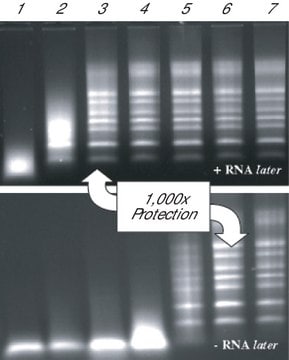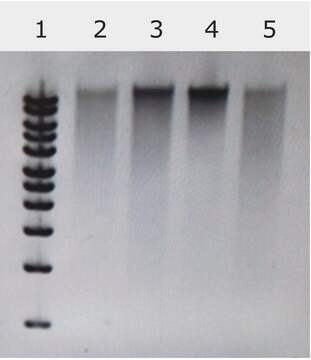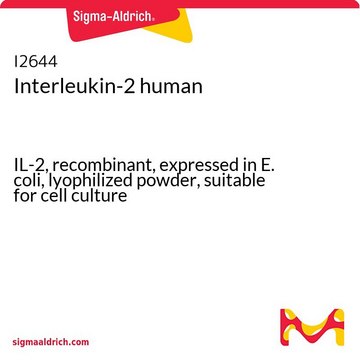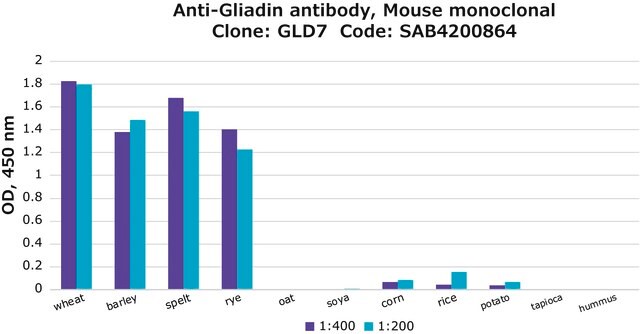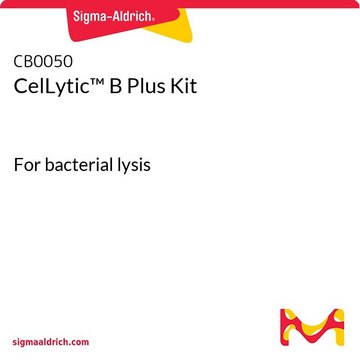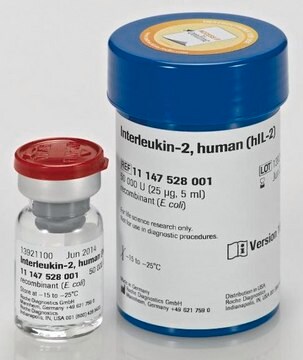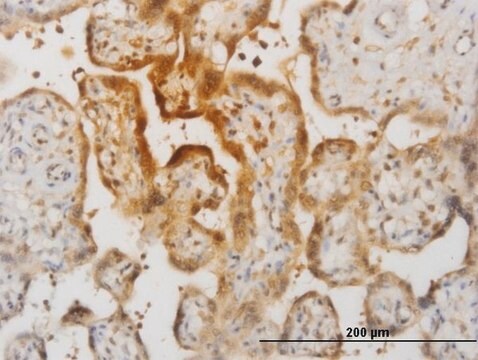Kluczowe dokumenty
PNS1010
Stabilyser Reagent
for stabilization of DNA, RNA, and protein in tissue extracts
About This Item
Polecane produkty
Formularz
liquid
Poziom jakości
Właściwości
for stabilization of DNA, RNA, and protein in tissue extracts
Warunki transportu
wet ice
temp. przechowywania
2-8°C
Opis ogólny
Stabilyser Reagent is a proprietary formulation of detergents and solutes optimized for efficient extraction, stabilization and storage of protein, DNA, and RNA from tissue samples. The unique composition of Stabilyser enables isolation of functionally active proteins, while maintaining integrity of nucleic acids. Stabilization of proteins and RNA is achieved even after 24 hours at room temperature Stabilyser reagent is compatible with Western blotting protocols, functional protein activity assays, and nucleic acid applications like qPCR.
Use in conjunction with a homognenizer for simultaneous tissue lysis and stabilization of protein and nucleic acids in tissue samples.
Zastosowanie
Cechy i korzyści
- Gentle, non-denaturing lysis buffer does not interfere with downstream applications
- Convenient ready-to-use reagent
- Stabilizes RNA and protein for analysis at a later date
Uwaga dotycząca przygotowania
Kod klasy składowania
10 - Combustible liquids
Klasa zagrożenia wodnego (WGK)
WGK 2
Temperatura zapłonu (°F)
Not applicable
Temperatura zapłonu (°C)
Not applicable
Wybierz jedną z najnowszych wersji:
Masz już ten produkt?
Dokumenty związane z niedawno zakupionymi produktami zostały zamieszczone w Bibliotece dokumentów.
Produkty
Stabilize complete, uniform tissue homogenates. Maintain RNA and functional proteins with Stabilyser reagent, the only reagent that protects the integrity of nucleic acid and active protein in one uniform lysate mixture.
Powiązane treści
Metody lizy komórek i ekstrakcji białek obejmują przegląd różnych technik, od rozpuszczania detergentami po mechaniczne rozbijanie, wspierając potrzeby badawcze.
An overview of cell lysis and protein extraction methods including detergent solubilization, freeze-thaw lysis, osmotic shock, sonication, enzymatic cell lysis, and mechanical disruption techniques such as Dounce, Polytron, and mortar and pestle homogenization.
Metody lizy komórek i ekstrakcji białek obejmują przegląd różnych technik, od rozpuszczania detergentami po mechaniczne rozbijanie, wspierając potrzeby badawcze.
Nasz zespół naukowców ma doświadczenie we wszystkich obszarach badań, w tym w naukach przyrodniczych, materiałoznawstwie, syntezie chemicznej, chromatografii, analityce i wielu innych dziedzinach.
Skontaktuj się z zespołem ds. pomocy technicznej
